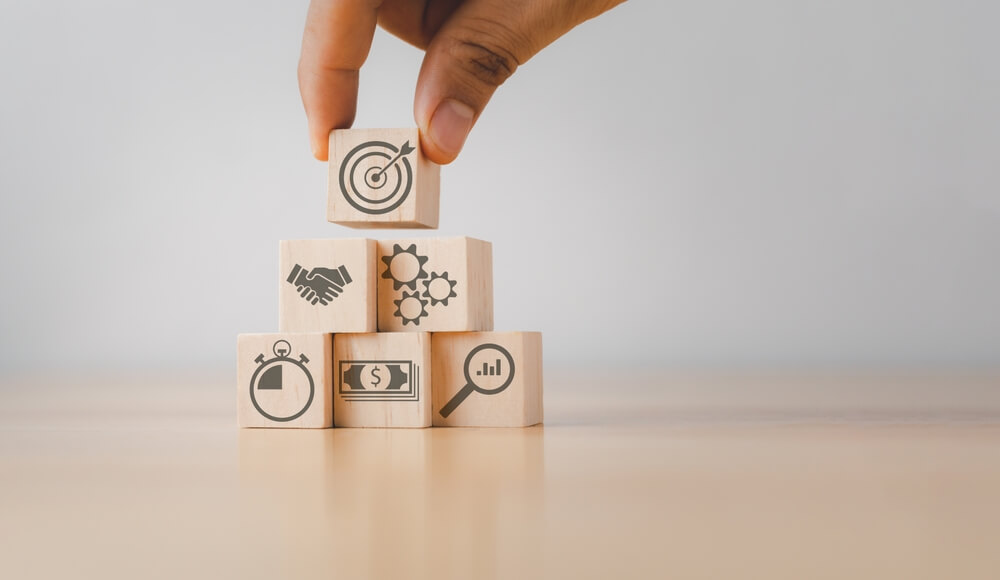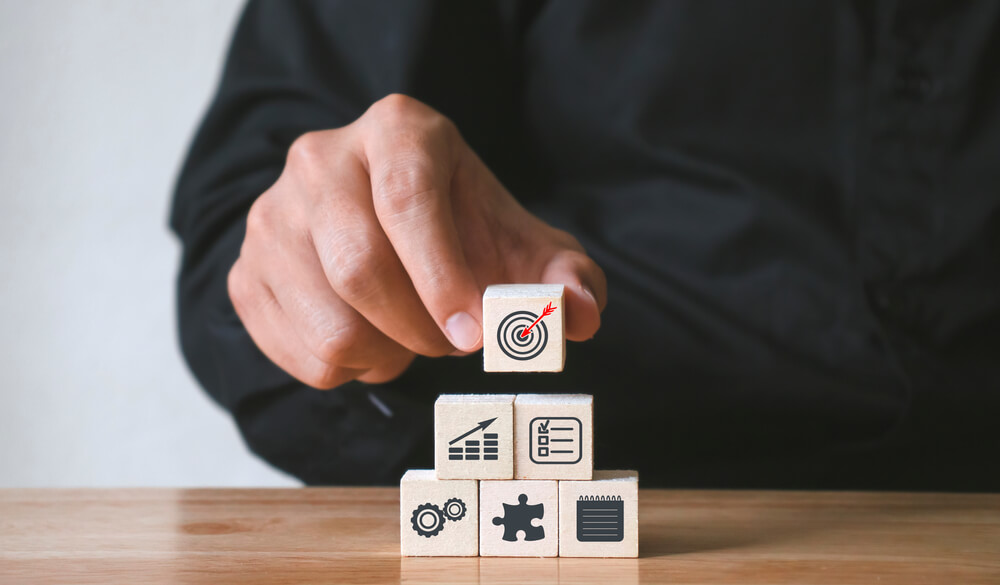Building customer support and service capability is essential to supporting customers and products to ensure your company’s success through continued customer loyalty and retention. It’s only natural that you’d want to develop these capabilities to keep your customer service strategy up-to-date and maintain your competitive advantage in the market.
In this guide, we’ll break down how to define and build customer support and service capability in your organisation, and the methods you can use to develop them.
What is customer support & service capability?
Customer support and service capabilities are the mix of knowledge, skills, tools, processes and behaviours that, when combined, deliver on organisational objectives. Strong customer support and service department capabilities help organisations support customers with inquiries, issues, and concerns to drive customer satisfaction and business success.
3 steps to define customer support & service capabilities
There are three steps you should follow to effectively build customer support and service capabilities.
Step 1: Define the landscape
The first step in creating customer support and service capabilities? Defining the need. This might seem easy—after all, customer support is in the name already—but you need to consider three factors here.
- What is your organisation’s greater mission, purpose, and values?
- What role does customer support and service capability play in that mission?
- What value does your customer support function generate for the business, now and into the future?
Why does this matter? Customer support and service capabilities need to be aligned with your business strategy in order to deliver on desired organisational outcomes. So, it’s crucial that you have a clear, defined vision to align capabilities with. This way, you’ll be sure your L&D programs are pushing your workforce towards the right organisational transformation.
Step 2: Define the purpose
Each of your customer support and service capabilities need to have a purpose within the context of your organisation. To really narrow this down, there are five things to consider here.
- Organisational strategy. How does the capability drive desired business outcomes?
- Market demand. Is there need for the capability in the market?
- Company resources. Do you have the right resources to sustain the capability?
- Existing capabilities. Does it complement or compete with current capabilities?
- Risks. What are the risks associated with building the capability?
Step 3: Define the outcome
When you come around to naming capabilities, write them in terms of a desired outcome. So, for example:
- Increased customer feedback
- Providing technical support and assistance
- Managing customer service requests and support tickets.
The idea is for employees to be as clear as possible on what the capability is and how it functions just by looking at the name. This also means that capabilities, being unique to your specific business and niche, will need to be described in a way that fits with your brand voice and mission.
If you’re still struggling to think of capabilities, we have a list of customer support and service capabilities here, all free to use and re-work for your company. To make it even easier for you, the list also comes with complete descriptions and competency levels, too. And, if you want to find customer support-adjacent capabilities, we also have customer success & account management and communications capabilities as well.
Strategies for building customer support & service capability
When it comes to developing customer support & service capability in your organisation, there are a few steps to work through in defining and development.
- Gain leadership buy-in
- Develop co-ownership between HR and customer support
- Assess customer support & service capability gaps
- Assess customer support & service capability maturity
- Build customer support & service capability
- Monitor and track progress.
Engaging leadership
It’s no secret that capability building begins with leaders, with 70% of change programs failing when there’s a lack of leadership buy-in. Getting that buy in is less about convincing them of the importance of capabilities, and more about selling the development of capabilities.
The best way to do that is to illustrate exactly how developing capabilities solves leaders’ pain points. They want to know how well the customer service team meets KPIs after they’ve gone through a capability development program, or how developing capabilities now will help the organisation when industry changes bring about new pain points.
Customer support and service leaders want to understand the value developing customer support and service capabilities brings to the business, and to see the ROI of training initiatives. Maybe employee retention is low, but could be higher. Maybe leaders want customer service teams’ competency (we’ll get to that later) improve from good customer service to exceptional customer service. Showing them how L&D can achieve this for them is how you get leadership buy-in.
Co-ownership between HR and customer support
Here’s the problem: If you leave capability building entirely to HR, then L&D will be aligned with organisational strategy and priorities but might be disconnected from the needs of customer support and service teams. On the other hand, leaving L&D to customer support entirely will create a rift between the support business units and the overall needs of the business.
The answer to this predicament is to create co-ownership between HR and customer support. This way, you ensure that L&D initiatives are designed to:
- Deliver on desired organisational outcomes.
- Meet the ever-changing needs of the specific customer support department.
Learning is at its most effective when employees are engaged, and clear goals and priorities in terms of business strategy and relevance to specific job roles goes a long way to building learning engagement.
Understanding customer support & service capability gaps
All businesses face market changes over time, which in turn affect market demand and customer expectations. But if your customer support team doesn’t keep up to date with their capabilities, the business will be left behind. To make sure you’re meeting the customer support and service capability requirements you need for the future, you need to perform capability assessments.
Capability assessments are measured with levels of competency, or proficiency. Competencies are generally split into scaled levels that look something like:
- Beginner, intermediate, advanced
- Needs development, meets expectations, exceeds expectations.
So, when you perform a capability assessment, it should determine the level to which any given customer support & service capability is performed. Theoretically, as employees’ capabilities improve, they’ll move up to higher levels. The best way to assess where individual employees’ capabilities sit on these scales, though, is to use multiple types of capability assessments in tandem.
- Start with self-assessments for employees, where they evaluate their own competency.
- Compare self-assessments with manager assessments. Managers know the business strategy, so they’ll have a more objective view of employee competency.
- With one or both of the above, use a subject matter expert assessment. These are generally for specialist capability sets.
Assessing customer support & service capability maturity
Then we have capability maturity. This isn’t the same as competency, which looks at proficiency at an employee level. Maturity is more concerned with the capabilities of the business as a whole, making it useful for prioritising the development of important capabilities based on business risk.
But like competency, capability maturity comes in a scale of levels.
- Initial, in which work may be reactive
- Managed, where things are planned, measured and somewhat controlled
- Defined, where there are clear standards in place
- Quantitative, where things are managed using data-driven objectives
- Optimised, which focuses on continuous improvement in the name of agility.
Just like with competency, capabilities should slide along your maturity curve as they improve through development. You can then pick the capabilities most in need of development based on their maturity and importance to business success.
Hot tip: When you evaluate their importance, it’s useful to display them in a capability heat map to get an idea of which to prioritise for development first.
Methods to build customer support & service capability
This is where you design your L&D activities to build and develop customer support and service capabilities in your organisation. Given customer support and service is essential to business performance, you’ll want to make your development programs as strong as possible.
The easiest method is to use a knowledge management system, or performance learning management system (PLMS). It keeps all your training materials and resources in one central place and is easily accessed by employees. This means they can review learning materials in the moment as needed, allowing them to learn within the flow of work. The one thing to remember here is to make sure that you have information owners who can keep all the learning materials and information up to date. A PLMS also aligns your capabilities to your business strategy and performance, meaning your capability-building programs will actively drive your business forward.
Other methods for building customer support and service capability include:
- Providing both formal and informal coaching to employees, allowing customer support staff to learn from a mentor who can correct mistakes and reinforce desired behaviours and knowledge.
- Using mobile learning as supplemental learning on top of formal training measures. This encourages greater knowledge retention as employees can reinforce what they’ve learned at regular intervals, combating the forgetting curve.
- Offering internal courses which can promote social learning and sharing best practices, as well as ensuring that all employees receive the same information on processes, procedures, behaviours and systems.
Tracking progress
You want long-lasting, incremental change in employee behaviours and actions to ensure organisational transformation, which is why you need to regularly track and measure progress is capability development.
This isn’t just about seeing how well capability maturity has improved in your organisation as a result of increased individual competencies. You also need to look at how well your training methods work for learning effectiveness. Your C-suite wants to see the cold, hard numbers to prove customer support and service is bringing value to organisation. So, you need to do consistent assessments.
- A training needs analysis assesses what training you need and determine the most effective training methods to develop capabilities. This can be useful after training to evaluate where there may still be gaps in capability.
- Training feedback, evaluations and surveys cover how training was received by employees and what can be improved for the future.
- Link training with performance management to create a feedback loop between manager and employee, ensuring development and improvement is continuous and consistent. A PLMS can help you in storing all your performance management data linked directly to learning outcomes.
Key takeaways
The industry landscape and market demands will inevitably change, so it’s important that you create a process of continual development for customer support and services capability. Optimising customer support capabilities—and the process of developing them—allows your business to build a strong brand reputation and rapport with customers, ensuring business success. You just need to:
- Get buy-in from leaders
- Establish co-ownership between HR and customer support teams
- Identify your customer support and service capability gaps
- Assess the maturity of capabilities and prioritise which to develop
- Link L&D with everyday work
- Monitor progress for continuous improvement.
Related Reads on This Topic

How to Build Customer Success & Account Management Capability in Your Organisation
We get into how you can define, create and build customer success and account management capability with a step-by-step process…

What You Need to Know for Building & Assessing Procurement Capability
Discover how to define procurement capabilities, and get the 6-step guide to building and assessing them for organisational success…

The How-to Guide to Defining & Assessing Communications Capability
We walk through how to define and assess communications capability, and dive into the step-by-step process to build them…